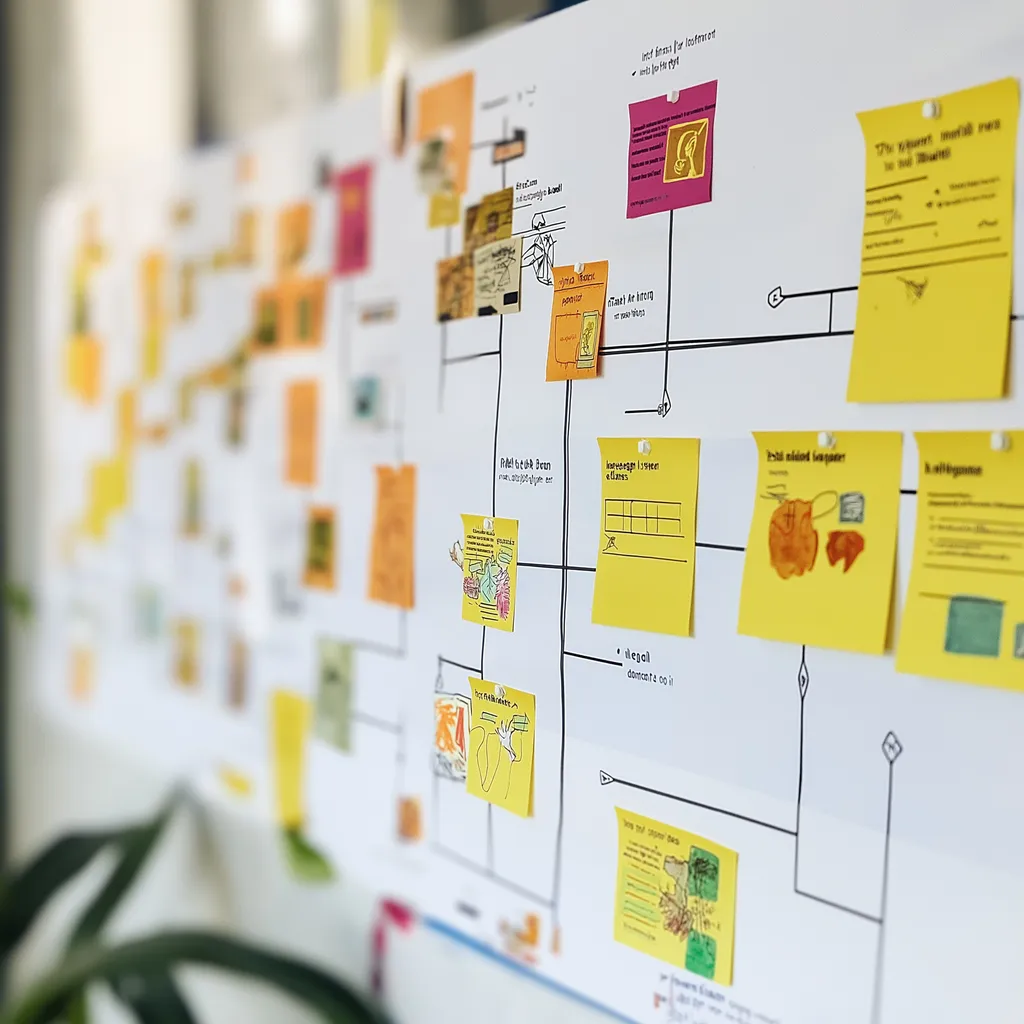Step 11: Crafting a Lean Marketing Strategy for Maximum Impact
In today’s fast-paced, data-driven world, traditional marketing approaches with large budgets, broad messaging, and limited accountability are no longer effective. To succeed, you need efficiency, agility, and a laser focus on your goals.
Lean Marketing is the answer. It’s about doing more with less, focusing on what truly matters, and continuously improving your strategy based on data and results. Here’s how you can craft a lean marketing strategy that maximizes your ROI:

Step 11: Crafting a Lean Marketing Strategy for Maximum Impact
1. Identify Your Audience
Understanding your audience is the cornerstone of any successful marketing strategy. Use data analytics to gain insights into who your customers are, what they need, and how they behave. Segment your audience based on demographics, psychographics, and behavior to create targeted marketing campaigns that resonate with each group. By knowing your audience, you can tailor your messaging to address their specific pain points and desires, making your marketing efforts more effective and efficient.
2.Craft Targeted Messaging
Once you have identified your audience, the next step is to craft targeted messaging that speaks directly to them. Your messaging should be clear, compelling, and personalized. Use language that resonates with your audience and addresses their needs and desires. Personalization is key in today’s marketing landscape, as it helps build a connection with your audience and increases engagement. Whether it’s through email marketing, social media, or content marketing, ensure that your messaging is consistent and aligned with your brand’s voice and values.
3.Leverage Automation
Marketing automation tools can help streamline your marketing processes, save time, and ensure consistent communication with your audience. Automation allows you to set up workflows that trigger specific actions based on user behavior, such as sending a welcome email when someone signs up for your newsletter or a follow-up email after a purchase. By automating repetitive tasks, you can focus on more strategic activities and improve the efficiency of your marketing efforts. Additionally, automation tools provide valuable data and insights that can help you optimize your campaigns and achieve better results.
4. Measure Results
To ensure the success of your lean marketing strategy, it’s essential to continuously measure and analyze your results. Use key performance indicators (KPIs) to track the performance of your marketing campaigns and identify areas for improvement. KPIs can include metrics such as conversion rates, click-through rates, engagement rates, and return on investment (ROI). By regularly monitoring your KPIs, you can gain insights into what’s working and what’s not, and make data-driven decisions to optimize your strategy. Remember, the goal of lean marketing is to achieve maximum impact with minimal resources, so it’s crucial to focus on the metrics that matter most to your business.


5. Create a Dynamic Strategy
In today’s ever-changing market, it’s important to have a dynamic marketing strategy that can adapt to new trends and insights. Be flexible and ready to pivot as needed. Continuously test and experiment with different tactics to see what works best for your audience. Stay up-to-date with the latest marketing trends and technologies, and be open to trying new approaches. A dynamic strategy allows you to stay ahead of the competition and respond quickly to changes in the market. By being agile and adaptable, you can ensure that your marketing efforts remain effective and relevant.
6. Optimize Your Budget
One of the key principles of lean marketing is optimizing your budget to achieve the best possible results. This means allocating your resources wisely and focusing on the channels and tactics that deliver the highest ROI. Conduct a thorough analysis of your marketing spend and identify areas where you can cut costs without compromising on quality. For example, you might find that certain advertising channels are not delivering the desired results and can be scaled back or eliminated. By optimizing your budget, you can ensure that every dollar spent contributes to your overall marketing goals.
7.Foster Collaboration
Lean marketing is not just about efficiency and cost-effectiveness; it’s also about fostering collaboration within your team. Encourage open communication and collaboration among your marketing, sales, and customer service teams to ensure that everyone is aligned and working towards the same goals. By breaking down silos and fostering a culture of collaboration, you can improve the overall effectiveness of your marketing efforts and create a more cohesive and integrated strategy.
8. Focus on Customer Experience
In today’s competitive market, providing an exceptional customer experience is more important than ever. Lean marketing emphasizes the importance of understanding and meeting your customers’ needs at every touchpoint. From the first interaction with your brand to post-purchase support, ensure that your customers have a positive and seamless experience. Use customer feedback and data to continuously improve your processes and address any pain points. By prioritizing customer experience, you can build long-term relationships with your customers and drive sustainable growth.
9. Embrace Continuous Improvement
Lean marketing is an ongoing process of continuous improvement. Regularly review and assess your marketing strategy to identify areas for improvement and make necessary adjustments. Use data and insights to inform your decisions and drive your strategy forward. Encourage a culture of experimentation and learning within your team, and be open to trying new approaches and ideas. By embracing continuous improvement, you can ensure that your marketing efforts remain effective and relevant in an ever-changing market.


10. Leverage Technology
Technology plays a crucial role in lean marketing. From data analytics and automation tools to customer relationship management (CRM) systems and social media platforms, technology can help you streamline your processes, gain valuable insights, and improve the efficiency of your marketing efforts. Stay up-to-date with the latest marketing technologies and tools, and invest in the ones that align with your business goals and objectives. By leveraging technology, you can enhance your marketing strategy and achieve better results with fewer resources.
11. Build a Strong Brand
A strong brand is essential for the success of your lean marketing strategy. Your brand is more than just your logo and tagline; it’s the overall perception of your business in the minds of your customers. Invest in building a strong brand that resonates with your audience and reflects your values and mission. Consistently communicate your brand message across all channels and touchpoints, and ensure that your brand is aligned with your marketing strategy. A strong brand can help you stand out in a crowded market and build trust and loyalty with your customers.
12. Engage with Your Audience
Engaging with your audience is a key component of lean marketing. Use social media, email marketing, and other channels to interact with your customers and build relationships. Encourage feedback and listen to what your customers have to say. By engaging with your audience, you can gain valuable insights into their needs and preferences, and tailor your marketing efforts accordingly. Additionally, engaging with your audience can help you build a community around your brand and foster loyalty and advocacy.
13. Monitor Competitors
Keeping an eye on your competitors is essential for staying ahead in the market. Regularly monitor your competitors’ marketing strategies and tactics to identify opportunities and threats. Use competitive analysis tools to gain insights into their strengths and weaknesses, and leverage this information to improve your own strategy. By staying informed about your competitors, you can make more informed decisions and stay one step ahead in the market.
14. Adapt to Market Changes
The market is constantly evolving, and it’s important to stay agile and adapt to changes. Whether it’s new technologies, shifting consumer preferences, or economic fluctuations, be prepared to adjust your strategy as needed. Stay informed about industry trends and developments, and be proactive in responding to changes. By being adaptable, you can ensure that your marketing efforts remain effective and relevant in a dynamic market.
15. Measure Success
Finally, it’s important to measure the success of your lean marketing strategy. Use data and analytics to track your progress and assess the impact of your marketing efforts. Regularly review your KPIs and make adjustments as needed to ensure that you are on track to achieve your goals. Celebrate your successes and learn from your failures, and use these insights to continuously improve your strategy.
By following these steps, you can create a lean marketing strategy that drives sustainable growth and positions your business for success in today’s competitive landscape.


